
Mastering Commands and Instructions: The Power of Grammar Worksheets: Imperative Mood
In the vast landscape of English grammar, the imperative mood stands out for its directness and utility. It’s the voice we use to give commands, make requests, offer instructions, and provide advice. From everyday interactions like "Close the door, please" to critical directions such as "Evacuate immediately," the imperative mood is indispensable for clear and effective communication. While seemingly simple in its structure, truly mastering its nuances and appropriate usage requires dedicated practice. This is where well-designed Grammar Worksheets: Imperative Mood become an invaluable tool for learners of all levels.
This article will delve into the essence of the imperative mood, explore why grammar worksheets are so effective for its mastery, discuss the key elements of designing and utilizing effective Grammar Worksheets: Imperative Mood, and highlight the broader benefits of integrating them into language learning.

Understanding the Imperative Mood: The Foundation

At its core, the imperative mood is characterized by its direct address to an implied "you" (singular or plural) and its use of the base form of the verb. For instance, "Run!" implies "You run!" Similarly, "Be quiet!" means "You be quiet!" This simplicity is often what makes it one of the first grammatical structures learners encounter.

However, its simplicity belies a rich spectrum of functions:
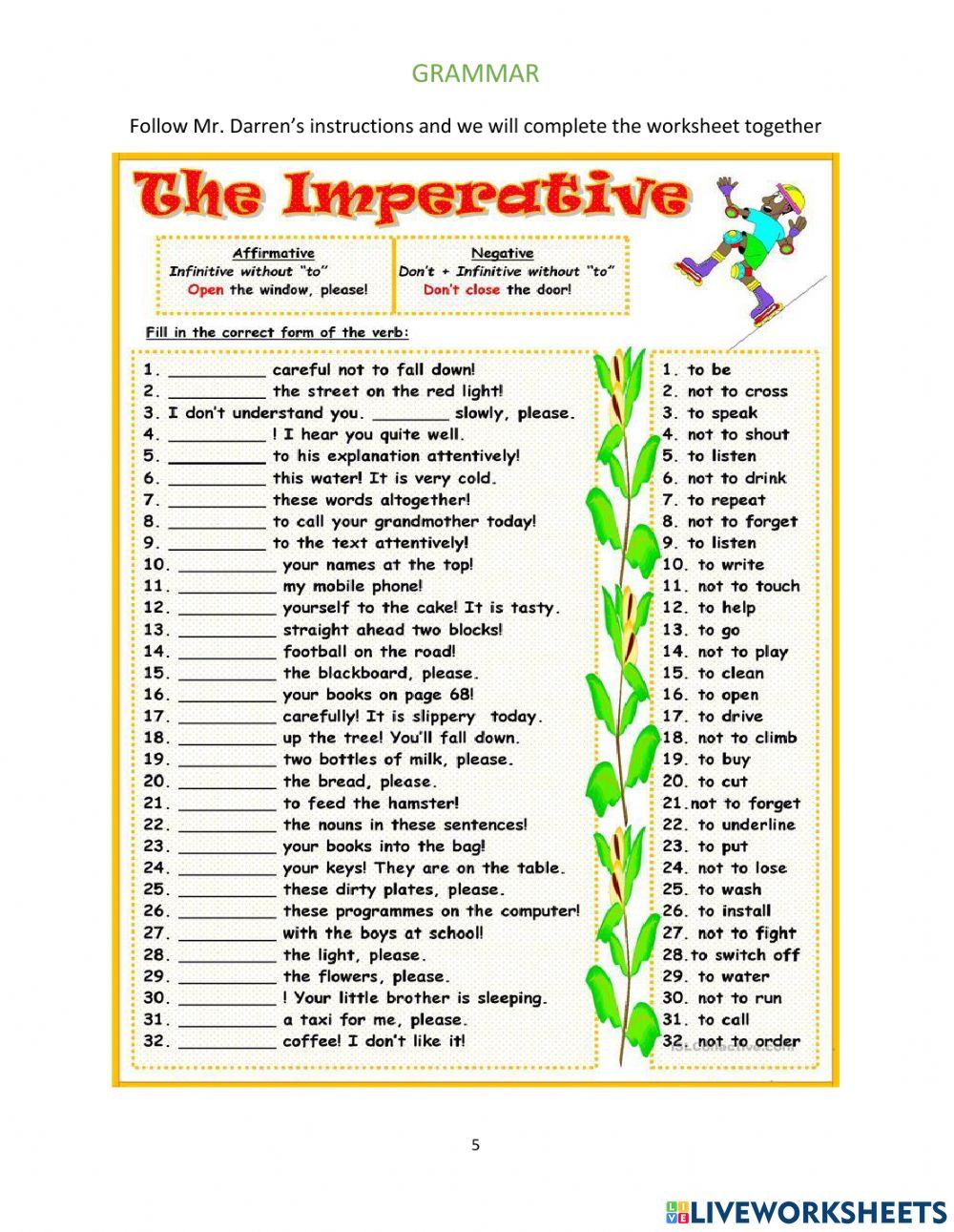
- Commands: "Stop talking!" "Listen carefully."
- Requests: "Please pass the salt." "Could you help me?" (Often softened with "please" or modal verbs).
- Instructions/Directions: "Turn left at the next intersection." "Mix the ingredients thoroughly."
- Advice/Suggestions: "Try to relax." "Don’t worry about it."
- Warnings: "Beware of the dog!" "Look out!"
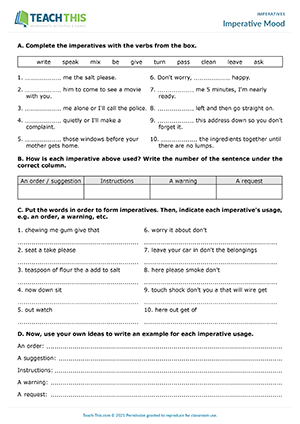
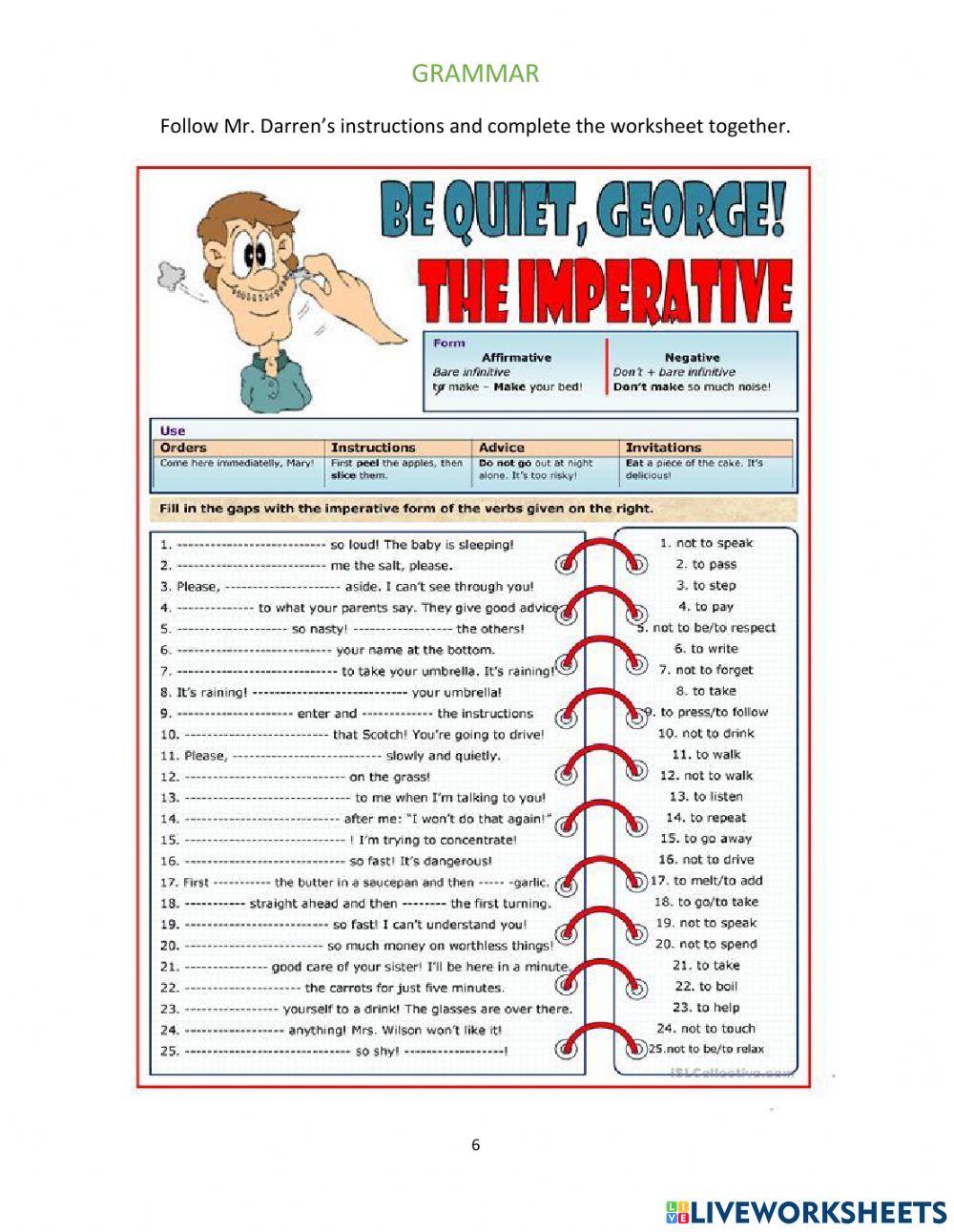
The negative imperative is formed by adding "Do not" or "Don’t" before the base verb: "Don’t forget your keys." "Do not enter." Understanding these variations and their contexts is crucial for effective communication, and this understanding is significantly reinforced through targeted practice found in Grammar Worksheets: Imperative Mood.

Why Worksheets? The Pedagogical Power of Practice
While theoretical explanations are a necessary starting point, true grammatical competence comes from active engagement and repeated application. Worksheets provide that structured environment for practice. Here’s why they are particularly effective for the imperative mood:
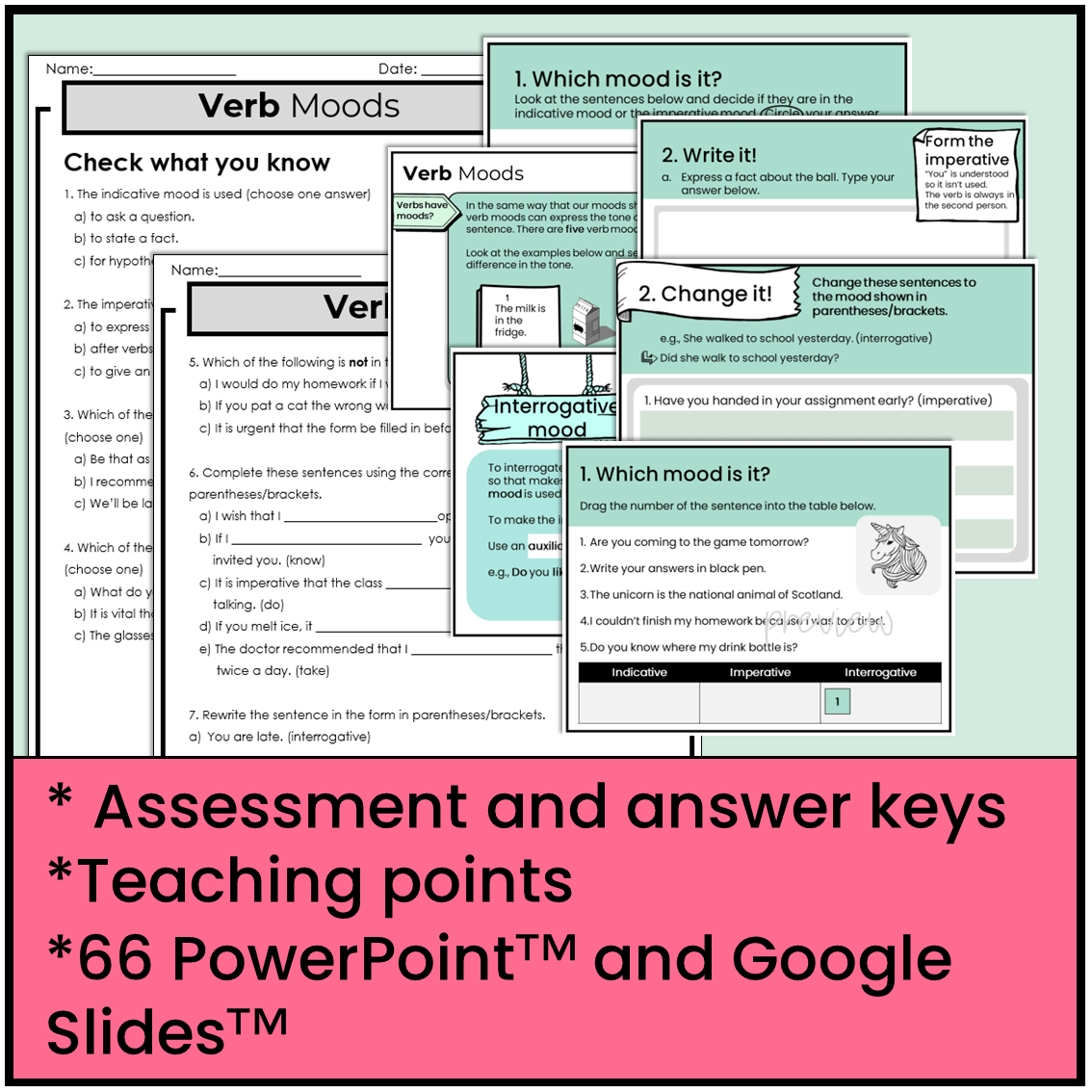
- Active Learning: Unlike passive listening or reading, completing a worksheet requires learners to actively recall, apply, and manipulate grammatical rules. This hands-on approach solidifies understanding far more effectively.
- Reinforcement and Repetition: The imperative mood is used constantly in daily life. Worksheets allow for repeated exposure and practice in various contexts, helping to embed the patterns in a learner’s long-term memory.
- Diagnostic Tool: Errors made on worksheets can quickly highlight specific areas where a learner is struggling, whether it’s distinguishing between a command and advice, forming negative imperatives, or applying appropriate politeness markers.
- Contextual Application: Effective worksheets don’t just ask learners to identify imperatives; they ask them to use them in meaningful scenarios, bridging the gap between abstract rules and real-world communication.
- Scaffolding: Worksheets can be designed with increasing levels of difficulty, starting with basic identification and progressing to more complex sentence construction or contextual application, providing a gradual learning curve.
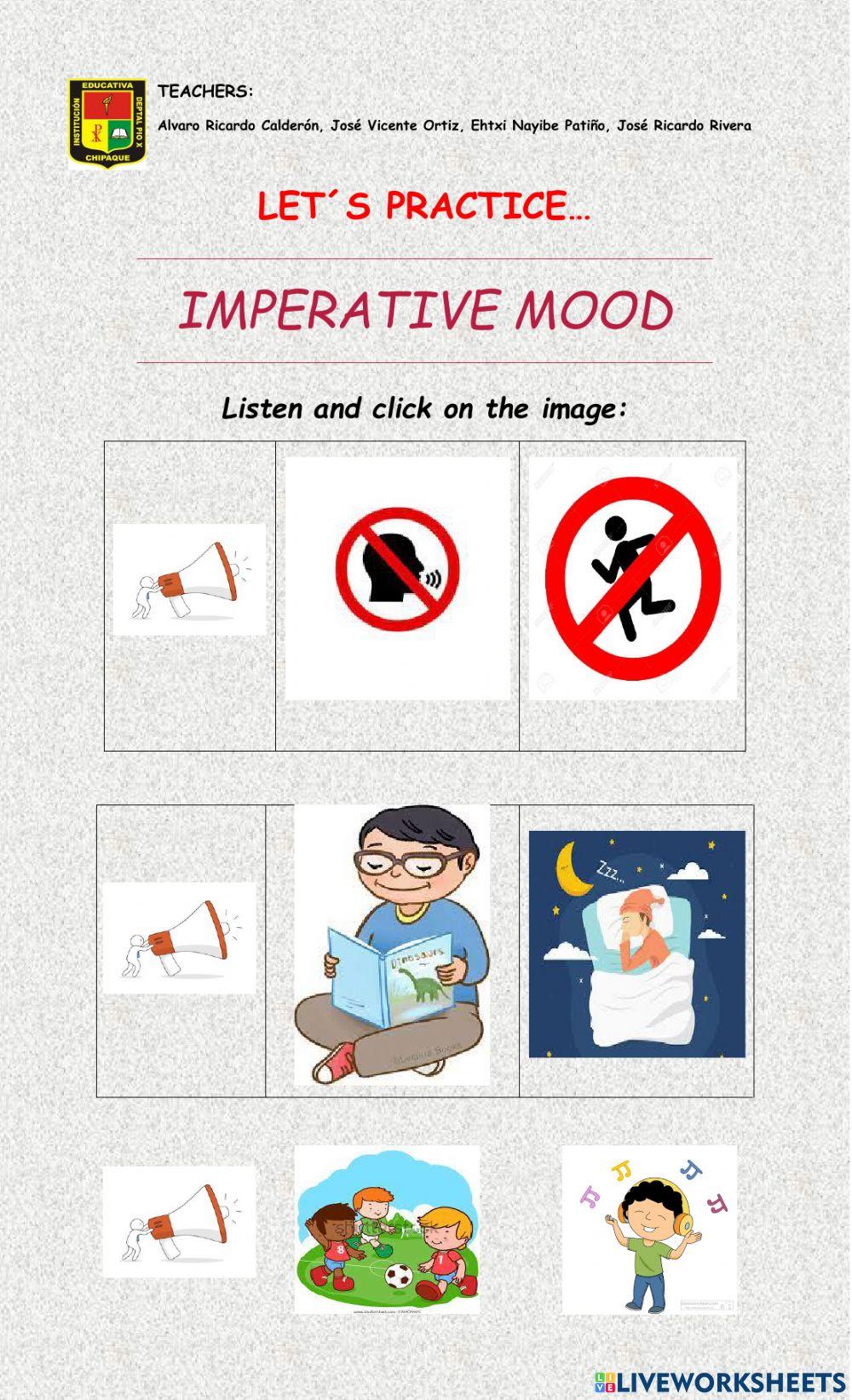
For a grammatical concept as ubiquitous and varied as the imperative mood, the systematic, iterative practice offered by Grammar Worksheets: Imperative Mood is simply indispensable.
Designing and Utilizing Effective Grammar Worksheets: Imperative Mood
The effectiveness of a worksheet lies in its design and how it’s integrated into the learning process. Here are key considerations:
1. Variety of Exercise Types:
To cater to different learning styles and ensure comprehensive understanding, worksheets should include a diverse range of exercise types:
- Identification: Learners identify imperative sentences from a given text or list.
- Example: "Read the following paragraph and underline all the imperative sentences."
- Transformation: Learners change declarative sentences into imperative ones, or vice versa.
- Example: "Change ‘You should close the window’ to an imperative." (Close the window.)
- Sentence Completion/Gap-fill: Learners fill in the blanks with appropriate imperative verbs based on context.
- Example: "The sign says: __ (Walk/Don’t walk) on the grass."
- Matching: Match situations to appropriate imperative responses.
- Example: "Match: A) Your friend is tired. B) You need help with a heavy box. Options: 1) Lift this! 2) Take a break."
- Picture Prompts: Learners write imperative sentences based on visual cues (e.g., a "No Smoking" sign, a recipe illustration).
- Example: "Look at the image of someone cooking. Write three imperative instructions."
- Dialogue Creation: Learners create short dialogues using imperative sentences for commands, requests, or advice.
- Example: "Write a short conversation between a doctor and a patient, including at least two pieces of advice from the doctor."
- Real-World Application:
- Recipes/Instructions: Learners write simple recipes, assembly instructions, or directions using imperatives.
- Emergency Signs/Public Notices: Analyze and create common imperative signs (e.g., "Exit Here," "Queue Here").
- Advice Columns: Learners write advice to hypothetical problems using imperative structures.
- Error Correction: Learners identify and correct incorrect imperative usages.
- Example: "Correct the mistake: ‘Please to close the door.’"
2. Clear Instructions and Examples:
Each section of the worksheet must have concise, unambiguous instructions. Providing a clear example for each exercise type helps learners understand the task immediately, reducing confusion and allowing them to focus on the grammar.
3. Contextual Relevance:
Imperatives are always used in a specific context. Worksheets should reflect this by embedding exercises in realistic scenarios. Instead of isolated sentences, present them within short paragraphs, dialogues, or descriptions of situations. This helps learners grasp the function of the imperative beyond just its form.
4. Gradual Difficulty and Scaffolding:
Start with simpler tasks (identification, basic transformation) and gradually introduce more complex ones (contextual writing, nuanced requests). This allows learners to build confidence and skills progressively.
5. Answer Key (for self-study):
For learners using worksheets for self-study, an answer key is essential for immediate feedback and self-correction. For classroom use, it can facilitate peer-checking or quick teacher review.
6. Engaging Content:
Whenever possible, choose topics and scenarios that are interesting and relevant to the learners’ lives or potential future needs. This increases motivation and engagement.
Implementing Grammar Worksheets: Imperative Mood in Learning
The way worksheets are used is as important as their design:
- Pre-Assessment: Use a simple worksheet to gauge learners’ existing knowledge before introducing the topic, helping to tailor instruction.
- Guided Practice: After explaining the concept, work through the first few exercises together as a class or group, clarifying doubts and demonstrating the thought process.
- Independent Practice: Assign worksheets for individual completion, allowing learners to apply what they’ve learned at their own pace.
- Pair/Group Work: Encourage collaborative completion of worksheets. This fosters discussion, peer-teaching, and the negotiation of meaning, which are excellent for language acquisition.
- Feedback and Review: Go over the answers collectively, explaining common errors and reinforcing correct usage. This is a critical step; simply completing a worksheet without feedback yields limited benefit.
- Differentiation: Offer different levels of worksheets to cater to varying proficiency levels within a group. Some learners might benefit from more basic identification tasks, while others are ready for complex creative writing using imperatives.
Beyond Grammar: Broader Benefits
Mastering the imperative mood through dedicated practice with Grammar Worksheets: Imperative Mood extends beyond mere grammatical correctness:
- Enhanced Communication Clarity: Learners become more adept at giving clear, concise instructions, which is vital in many real-world situations (e.g., giving directions, explaining a procedure, managing a team).
- Improved Listening Comprehension: Understanding imperatives accurately is key to following instructions, whether in an academic setting, a workplace, or daily life.
- Better Writing Skills: The ability to write clear instructions, warnings, or advice is a valuable skill in academic, professional, and personal contexts.
- Cultural Nuance: Worksheets can subtly introduce the importance of politeness markers (e.g., "please," "could you") when using imperatives, helping learners navigate social interactions more appropriately.
Conclusion
The imperative mood, despite its structural simplicity, is a powerful and frequently used grammatical tool essential for direct and effective communication. Its mastery is not just about memorizing rules but about internalizing their application in diverse contexts. This is precisely where meticulously designed and strategically utilized Grammar Worksheets: Imperative Mood prove their immense value. By offering varied, contextualized, and progressively challenging practice, these worksheets empower learners to confidently issue commands, make polite requests, give clear instructions, and offer sound advice, ultimately leading to more robust and confident English communication skills. Embrace the power of practice, and watch as the imperative mood transforms from a concept into a natural, intuitive part of your language repertoire.
